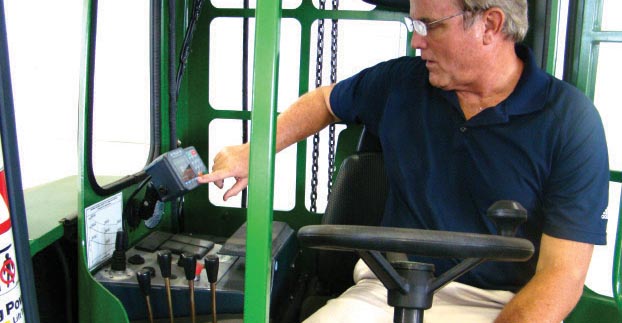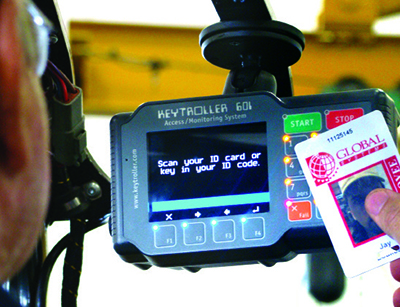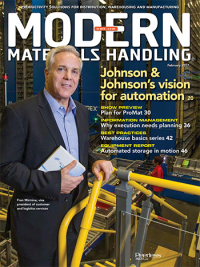Fleet management solutions as monitor and mentor
In the quest to identify and control maintenance costs, fleet-tracking devices can support the goals of the operator and manager.
When it comes to controlling fleet maintenance costs, avoidable damage seems like it should be the easiest to, well, avoid. However, controlling operator behaviors while balancing productivity and safety is easier said than done. Even at the high end of telematics solutions, operator accountability is a central facet, but added accountability can often feel to operators like added opportunities to be reprimanded.
According to Terry Wickman, president of Keytroller, fleet-monitoring technologies should do more than place blame. By collecting data and examining the root causes of safety incidents, close calls and avoidable damage, managers and operators can create a more positive environment, not a more punitive one. He notes the growing use of monitoring systems with cameras that capture events.
“This is not just about accountability, it’s about training both operators and managers,” Wickman says. “With real-world video of an impact or close call, new operators can learn about the risks in their specific facility. There might be certain areas of the plant that are more dangerous, and managers might not know because they aren’t driving the equipment.”
In the process of discovering and accounting for these risks, maintenance costs and their many sources will become clearer, he says. Not every fleet has a good handle on the total cost of avoidable damage, much less its definition. Wickman suggests a return on investment calculator that bundles all the small ways that costs get bigger: rack and equipment damage, lost or broken keys, poor maintenance scheduling, the time taken to perform manual checklists, and more.
“In the early days of these solutions, the goal was almost exclusively damage reduction, since there was a lot of undocumented damage in a lot of forklift applications,” Wickman says. “Anecdotally, customers who use fleet monitoring solutions for the first time get a 50% reduction in damage, and that might vary from 35% to 70%.”

The solutions and their users have since evolved to provide a wider view into equipment use and efficiency. However, to produce optimal results, these solutions require continuous engagement from operators and managers.
“We’ve heard over the years about people who put devices on a piece of equipment and don’t manage it properly. The impact alarm goes off, the supervisor deactivates it, and that’s the end of it,” Wickman says. “Customers with multiple plants using the same products on the same equipment in the same applications will report varying levels of success. It really depends on the management in each facility to make it happen.”

Article Topics
Columns News & Resources
New resource center for weighing and dimensioning Protective packaging roundup MODEX C-Suite Q&A: Troy Donnelly, Senior VP of Sales, Marketing, and Application, DMW&H When Just-in-Time Just Doesn’t Work Recycling coastline plastic into premium reusable packaging Fresh food, anyone? RPCs protect in the supply chain Why Isn’t Your Loading Dock Connected to Your Supply Chain? More ColumnsLatest in Materials Handling
Registration open for Pack Expo International 2024 Walmart chooses Swisslog AS/RS and software for third milk processing facility NetLogistik partners with Vuzix subsidiary Moviynt to offer mobility solutions for warehouses Materials Handling Robotics: The new world of heterogeneous robotic integration BSLBATT is looking for new distributors and resellers worldwide Lucas Watson appointed CSO for Körber’s Parcel Logistics business in North America Hyster recognizes Dealers of Distinction for 2023 More Materials HandlingAbout the Author
Subscribe to Materials Handling Magazine

Find out what the world's most innovative companies are doing to improve productivity in their plants and distribution centers.
Start your FREE subscription today.
April 2024 Modern Materials Handling

Latest Resources












